Results 261 to 270 of 499
Thread Information
Users Browsing this Thread
There are currently 1 users browsing this thread. (0 members and 1 guests)
-
01-29-2023, 11:43 PM #261
Top 5 natural remedies for OVERCOMING ADDICTIONS to sugar, caffeine, alcohol, and nicotine
Sunday, January 29, 2023 by: Herbal Remedy Insider
Tags: addiction, addiction remedies, Cures, herbal medicine, Herbs, krave kicker, Milk Thistle, mucuna, Mucuna pruriens, natural remedies, remedies, St. John's wort, vitamin B12
5,230VIEWS
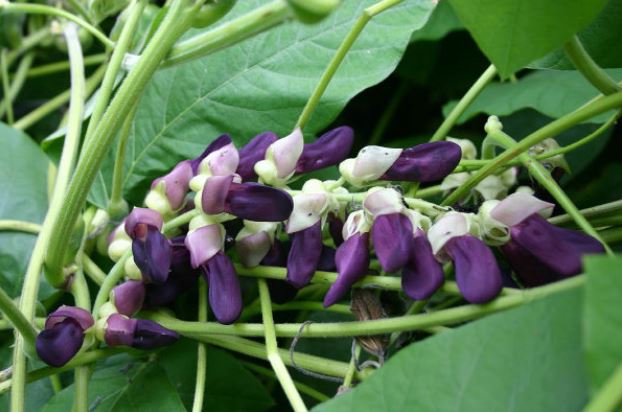 (Natural News) First and foremost, overcoming addictions is physical. The human body has several cleansing organs that get taxed and overworked, in desperate need of cleansing. Second, specific vitamins, minerals, and antioxidants get drained, leached, and depleted from the body due to the addiction(s), making it harder to recover and not relapse, especially for those who are unaware of the natural remedies that need to be replenished.
(Natural News) First and foremost, overcoming addictions is physical. The human body has several cleansing organs that get taxed and overworked, in desperate need of cleansing. Second, specific vitamins, minerals, and antioxidants get drained, leached, and depleted from the body due to the addiction(s), making it harder to recover and not relapse, especially for those who are unaware of the natural remedies that need to be replenished.
Whether you are addicted to sugar, caffeine, alcohol, or nicotine, there are natural solutions available at health food stores online and in the retail sector, and they won’t cost you an arm and a leg to load up on either. Time to do a little digging. Engage in a little research, and find out the best natural remedies for overcoming common addictions. Don’t feel bad. Don’t blame yourself. Don’t feel defeated. You can win this important battle, and you’ll feel great knowing you came out on top, the natural way.
Top 5 natural remedies for overcoming addictions, including recovering from overuse and abuse of alcohol, nicotine, sugar, and/or caffeine
#1. Dandelion root – for liver cleansing
#2. St. John’s Wort – for anxiety and depression
#3. Milk Thistle – also for liver cleansing
#4. Vitamin B12 as methylcobalamin – balances central nervous system
#5. Mucuna Pruriens – for dopamine boost and calming nerves
Dandelion Root and Leaves
Your cleansing organs are vital to your health. You cannot live without your liver, kidneys, or pancreas, but most Americans treat them like a trash can or garbage disposal, thinking they can just put anything in them and the “janitors” will do the rest of the work. Not true at all.
 Addictive substances often pollute the liver and cause a laundry list of health issues over time. In fact, the liver is one of the body’s most important organs as it deals with every aspect of body metabolism and digestion, breaking down toxins so the kidneys can then excrete them. Nervous system disorders are brought on by liver disease, because toxins build up in the blood and affect brain function. Want to know about an herb that’s perfect for helping the liver free itself of toxins that accumulate? Answer: Dandelion.
Addictive substances often pollute the liver and cause a laundry list of health issues over time. In fact, the liver is one of the body’s most important organs as it deals with every aspect of body metabolism and digestion, breaking down toxins so the kidneys can then excrete them. Nervous system disorders are brought on by liver disease, because toxins build up in the blood and affect brain function. Want to know about an herb that’s perfect for helping the liver free itself of toxins that accumulate? Answer: Dandelion.
Did you know that dandelion roots and leaves are medicinal? They are full of vitamins and nutrients. The root helps cleanse the liver by increasing bile production, removing toxins quickly and efficiently cleaning the liver. Available as a tea, powdered extract, or tincture, dandelion root is easy to come by. Look into it right away.
St. John’s Wort
For hundreds of years, natural health advocates have utilized St. John’s Wort as an old home remedy that’s useful for fighting mild depression, anxiety, and insomnia. Many people who overuse sugar, alcohol, and/or nicotine for years suffer from depression, especially when trying to cut back significantly or quit those toxic substances. They are all stimulants in the short term, but depressants in the long run.
The St. John’s Wort is a plant that grows yellow star-shaped flowers and is native to Europe, but has been planted all over the world. The remedy is made from the blooms and flowers. It’s also been used to treat nerve pain and heal cuts and bites. Are you in a “low mood” while trying to cut back or quit some addictive substance? Got mood swings? St. John’s Wort may help to stabilize those. Many people get quite cranky and anxious when quitting caffeine, alcohol, nicotine, or even sugar. St. John’s Wort can help.
Milk Thistle
Milk thistle, also known as silybum marianum, is a flowering herb also native to Europe but now grown on most continents. The active ingredient in milk thistle, silymarin, has antioxidant and anti-inflammatory effects. This helps restore liver health and protect against liver damage from excess alcohol.
Vitamin B12 as methylcobalamin
Methylcobalamin is by far the best kind and most bio-available form of vitamin B12, as opposed to cyanocobalamin (the kind found in 5-hour Energy). Because vitamin B12 is water soluble, it does not stay in the body for long. Vitamin B12 deficiency has been associated with smoking, as certain chemicals in cigarettes (nitrites, nitro oxide, cyanides, and isocyanides) literally leach vitamin B12 from the body. No matter what addiction you’re trying to kick, vitamin B12 as methycobalamin is essential for helping balance the nerves and provide you with energy for improving physical health.
Mucuna Pruriens (Ayurvedic Herb)
Traditional Ayurvedic herb mucuna pruriens has been used for thousands of years for its therapeutic qualities that provide balance to the nervous system and boost natural dopamine production in the human body, safely and effectively. Also known as the “dopamine bean” and “kapikacchu,” the beans of this herb yield the world’s most potent source of levodopa or L-Dopa. Taken as a dietary supplement in capsules, or mixed as a powder into beverages, mucuna pruriens can be substituted for nicotine, sugar, caffeine, or alcohol, and boost your mood, increase energy, and balance your nerves all the while. Who knows this?
Got anxiety from trying to quit an addiction? Mucuna can uplift your mood and calm your nerves. Now mucuna pruriens potent extract is available with vitamin B12 in an amazing new functional beverage called Krave Kicker. Now you can end addiction cravings naturally without having to apply endless willpower. Let the natural remedies do the work for you, and change your lifestyle for the better, starting right now.
Special Note: This article was authored by Herbal Remedy Insider, a researcher for Krave Kicker, the manufacturer of a functional beverage that contains a natural, herbal remedy for nicotine, sugar, alcohol, and caffeine cravings. This publisher was NOT compensated in any way for carrying this article. It is not a sponsored article, but the author is receiving publicity of this news item in exchange for providing the article at no cost.
Sources for this research include:
HealthStartsintheKitchen.com
Rehab4Addiction.co.uk
VeryWellHealth.com
SuperfoodEvolution.com
VitSupp.com
Healthline.com
KraveKicker.com
Top 5 natural remedies for OVERCOMING ADDICTIONS to sugar, caffeine, alcohol, and nicotine – NaturalNews.comIf you're gonna fight, fight like you're the third monkey on the ramp to Noah's Ark... and brother its starting to rain. Join our efforts to Secure America's Borders and End Illegal Immigration by Joining ALIPAC's E-Mail Alerts network (CLICK HERE)
-
02-03-2023, 12:32 AM #262
Learn how to freeze-dry and dehydrate food for long-term storage
Thursday, February 02, 2023 by: Zoey Sky
Tags: dehydrated food, food freedom, food preparation, Food Preservation, Food storage, food supply, freeze drying, goodfood, green living, homesteading, off grid, preparedness, prepper, prepping, survival, survival food, survival skills, survivalist, tips
2,880VIEWS
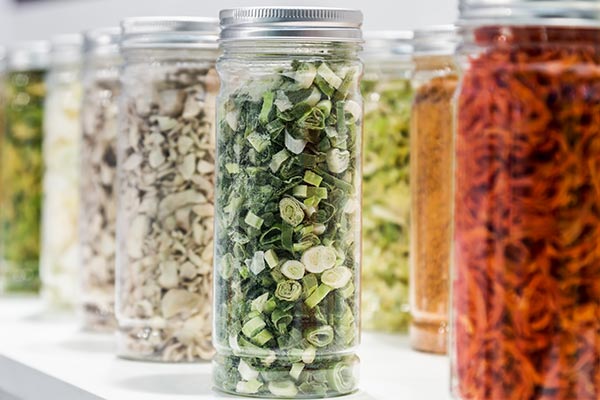
(Natural News) If you want to avoid harmful ingredients in food like added chemicals and other dangerous ingredients, you can learn how to preserve food using methods like freeze-drying or dehydration. (h/t to AllNewsPipeline.com)
Consumers are often dealing with food shortages and increasing food prices. If you want to secure more supplies for your stockpile before SHTF, invest in appliances that you can use to preserve food like a freeze-dryer or a dehydrator. You can also start a home garden to grow fresh, organic food for your whole family. (Related: Food preservation tips: How to salt meat for your stockpile.)
Tips for freeze-drying food at home
Freeze-drying machines are the more expensive option, with used machines being sold for at least $1,000. New freeze-drying machines can cost anywhere from $2,000 to $4,000.
To save money, you can also opt to freeze-dry food at home using alternative methods.
The home freezer method
Freeze-drying food may seem overwhelming, but you can also do it with a home freezer. However, since you don’t have a freeze-dryer this method will take longer.
To freeze-dry food using your freezer, you will need the following items.
- A cookie sheet, cooling rack, or large plate
- Food to be freeze-dried
- Storage space in the freezer
Preparation:
- Wash and cut up the food into small slices or chunks.
- Place the food on a tray in a single layer. Don’t stack the sliced food.
- Place the tray in your freezer and keep it away from other food items.
- Freeze the food for two to three weeks. Check it periodically to make sure the food is being freeze-dried.
- Once done, remove the food and store it in an airtight container or bag.

The dry ice method
The dry ice method doesn’t require special machinery.
You will need the following items:
- A large Styrofoam cooler
- Food to be freeze-dried, cut into slices or chunks
- Dry ice
- Freezer-safe, durable and airtight bags
Since dry ice lets all moisture from food evaporate very quickly, this method is much faster than using a home freezer, unless it is incredibly humid in your area.
Ideally, you should start the freeze-drying process when the humidity level is low if not zero. This is because the more moisture in the air, the longer the freeze-drying process will take.
Preparation:
- Wash and slice the food into small pieces or chunks. Store them in airtight, freezer-safe, but unsealed bags.
- Place the freezer bags in a large Styrofoam cooler.
- Cover the food with dry ice.
- Wait for at least 24 hours or longer.
- When the food is properly freeze-dried, remove the bags of dried food and store them properly.
Tips for dehydrating food at home
If you prefer a faster method, learn how to make dehydrated food. Knowing how to dehydrate food can also help prevent food waste since you can preserve items to be used later before they go bad.
There are two ways to store dehydrated food for long-term storage: Using a canning jar sealer and using Mylar bags and oxygen absorbers.
To dehydrate foods like fruits and vegetables, you will need a dehydrator and vacuum-sealed bags to store food. You can also store dehydrated food in clean canning jars, airtight food containers or freezer bags.
Vegetables
Vegetables must be dehydrated at 125 to 135 F for eight to 12 hours.
Generally, when dehydrating food that you eat raw you don’t need to pre-cook it before drying.
However, vegetables like broccoli, celery and corn should be blanched before dehydrating. Blanching means cooking the food item in boiling water and submerging it in cold water.
Blanching denatures enzymes that may affect the shelf-life and quality of the vegetables.
To cut this step out, you can dehydrate frozen vegetables since they are already pre-cooked/blanched and ready to dehydrate.
Fruit
Fruit needs to be dried at 135 to 145 F for eight to 15 hours.
Before dehydrating, some fruits like apples and bananas need to be treated with a citrus wash to delay browning. If you want to dehydrate other fruits, check food-specific recipes for the best results.
After drying, the fruit’s moisture content should be around 20 percent. Even if you’re extra careful, the fruit will dry unevenly. Fruit also requires an extra step before storing.
After the fruit cools completely, store it in plastic bags or glass jars for seven to 10 days. Shake the jars daily.
Once done, store the fruit as is or ground it up into a powder. During this time, condensation should not develop. If it does, it means there is too much moisture in the fruit, so process it again in your dehydrator.
Jerky
Jerky should be dried at 160 F for four to eight hours.
When processing meat to make jerky, follow recipes properly to avoid the risk of harmful bacteria.
According to the United States Department of Agriculture (USDA) Jerky and Food Safety Fact Sheet, bacteria in meat can survive the temperatures of a dehydrator (150 to 160 F) when cooked at a warm temperature for a long time.
To minimize the risk of food born illnesses from E. coli and salmonella, meat and chicken need to be pre-cooked at 160 F and 165 F, respectively, before dehydrating. Doing this helps destroy harmful bacteria that would survive under a dehydrator’s temperature setting.
Note that the shelf life of homemade jerky is one to two months. Meanwhile, store-bought jerky can last from eight months to one year.
Here are different foods that you can dehydrate at home:
Fruits:
- Apples
- Bananas
- Apricots
- Cherries
- Grapes
- Mangos
- Peaches
Vegetables:
- Beets
- Broccoli
- Cabbage
- Carrots
- Eggplant
- Mushrooms
- Zucchini
Herbs:
- Basil
- Dill
- Lavender
- Marjoram
- Mint
- Oregano
- Rosemary
- Sage
- Thyme
Here are other methods to try if you don’t want to spend money on a dehydrator:
Sun drying
Sun drying is one of the oldest and simplest methods used to dehydrate foods. With this method, you need to lay fruits like figs or mangos on a mesh screen or tray made with wooden dowels.
Next, cover the food with a second screen to protect it from pests and insects. You can use this method if you are in a sunny area with low humidity and a minimum temperature of 86 F.
When using this method, avoid screens made with hardware cloth because they may oxidize and leave residue on your food. Note that sundrying fruits may take several days to fully dry.
Air drying
Air drying is another simple dehydration method that doesn’t require any special equipment. Like sun drying, air drying places food in the shade instead of the sun.
This helps protect foods from the sun’s powerful rays and it’s a great method for dehydrating herbal teas, leafy greens and spices.
Solar drying
Solar dehydrators are powered by the sun and they can be used to dehydrate food even without electricity.
Some solar dehydrators look like a tabletop greenhouse. You can buy one or make it at home using materials that you can get from the local hardware store.
Oven drying
An oven that reaches a temperature of at least 140 F can also be used to dehydrate food. While oven drying can take at least six to 10 hours depending on the specific food, this method is ideal if you don’t want to buy a dehydrator.
Make sure your oven can be set to a temperature of 140 F or less since higher temperatures will cook food instead of drying it. Prop the door open while dehydrating foods so extra moisture can escape during the drying process.
Secure supplies for your survival stockpile by learning how to properly freeze-dry or dehydrate food like fruits and vegetables. These food preservation methods can also help you save money and avoid food waste.
Visit Foodstorage.news to read more articles with tips on food storage and preservation.
Watch the video below to know more about the benefits of preserving food through freeze-drying.
This video is from the Health Ranger Store channel on Brighteon.com.
More related stories:
Food preservation 101: A step-by-step guide to air-drying fruits.
Prepping skills: 15 Food storage and preservation methods to learn before SHTF.
Freeze-drying is one of the best ways to preserve food for long-term storage.
Sources include:
AllNewsPipeline.com
TheTrek.co
Healthline.com
Brighteon.com
Learn how to freeze-dry and dehydrate food for long-term storage – NaturalNews.com
If you're gonna fight, fight like you're the third monkey on the ramp to Noah's Ark... and brother its starting to rain. Join our efforts to Secure America's Borders and End Illegal Immigration by Joining ALIPAC's E-Mail Alerts network (CLICK HERE)
-
02-03-2023, 05:37 AM #263
Beneficial enzymes in barley grass can boost gut health and protect against cancer
Thursday, February 02, 2023 by: Zoey Sky
Tags: #nutrition, anticancer, Barley grass, digestive health, food is medicine, food science, goodfood, goodhealth, gut health, health science, herbal medicine, Herbs, ingredients, natural health, natural medicine, nutrients, recipes, superfoods
650VIEWS
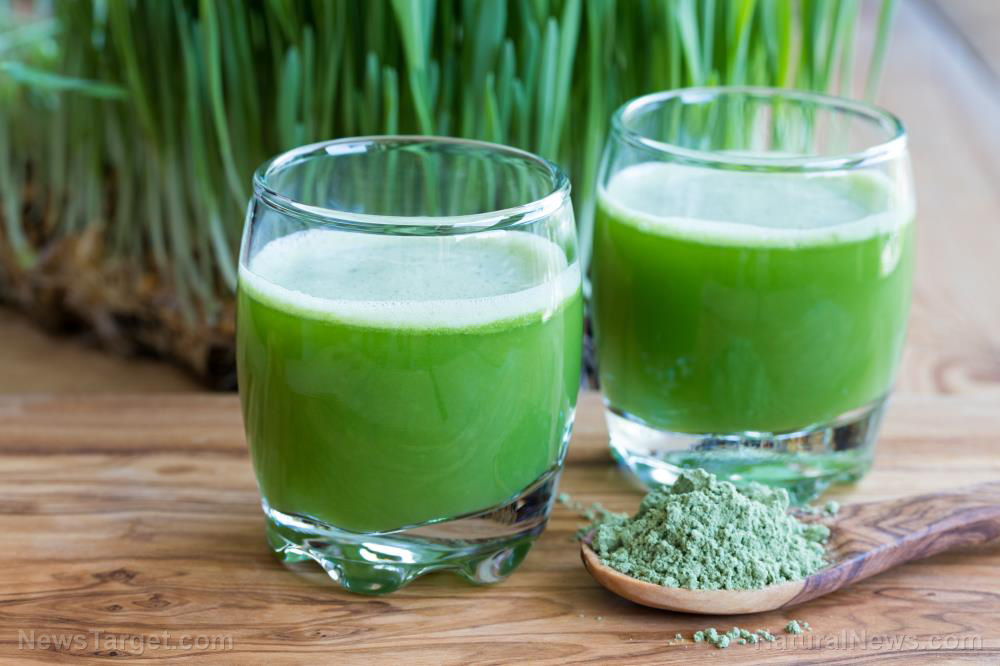 (Natural News) Supplements can help you get the nutrients you need, but it’s also important to follow a balanced diet and eat a variety of nutritious foods like green foods, which provide your body with essential nutrients.
(Natural News) Supplements can help you get the nutrients you need, but it’s also important to follow a balanced diet and eat a variety of nutritious foods like green foods, which provide your body with essential nutrients.
Green foods like barley grass contain beneficial enzymes that provide your body with vitamins, minerals and other nutrients in the most natural and readily available way.
If you’re still on the fence about adding barley grass to your diet, read on to find out why you should try it.
Barley grass may help protect against chronic diseases and cancer
Barley grass is worth trying because it offers several health benefits.
Data suggests that barley grass can support a healthy gut microbiota. It can also help your body eliminate accumulated toxins by relieving inflammation in the gut. (Related: These 3 foods can boost your heart and gut health.)
Incorporating barley grass into your diet helps boost your immune system, promotes optimal acid-alkali balance and naturally cleanses and detoxifies your body. Barley grass contains potent antioxidants that can protect against radiation and cell damage by helping regenerate damaged issues.
Barley grass can also help prevent the development of several diseases linked to oxidative stress. It works with vitamin E and beta carotene and functions as a supplier of the critical enzyme superoxide dismutase.
Data suggests that barley grass can be used to prevent and treat cancer thanks to superoxide dismutase. This enzyme helps neutralize the effects of oxygen-free radicals produced during energy metabolism.
 The enzymes in barley grass help suppress the rapid growth of cancer cells by decomposing and counteracting the effects of toxic hydrogen peroxide, which is generated during respiration.
The enzymes in barley grass help suppress the rapid growth of cancer cells by decomposing and counteracting the effects of toxic hydrogen peroxide, which is generated during respiration.
Barley grass can also help you maintain healthy skin and bones and promote agility. It can even help the body deal with stress and keep cholesterol levels in check.
When paired with a healthy lifestyle and a balanced diet, barley grass can help purify the blood. The vitamin E in barley grass helps regulate optimal hormone balance.
Barley grass also contains vitamin K, which has a crucial role in assuring normal bone metabolism.
Barley grass also helps boost concentration and reduces the effects of learning disorders.
Tips for incorporating barley grass into a balanced diet
Barley grass leaves are full of vitamins and minerals such as:
- Beta carotene
- Calcium
- Copper
- Folic acid
- Iron
- Magnesium
- Manganese
- Pantothenic acid
- Phosphorus
- Potassium
- Vitamin B1
- Vitamin B2
- Vitamin B6
- Vitamin C
- Zinc
Barley grass contains at least 30 times more vitamin B1 and 11 times the amount of calcium in cow’s milk.
Compared to spinach, barley grass contains nearly five times more iron. It also contains at least seven times the vitamin C in oranges, four times the vitamin B1 in whole wheat flour and 80 micrograms of vitamin B12 per 100 grams of dried barley plant juice.
To add barley grass to your regular diet, consume it as a juice extract from cereal grass sprouts. You can also buy it as a green powder and use it to make juices or smoothies.
Barley grass recipes to try
These recipes for various beverages and dishes include barley grass and other nutritious ingredients.
Barley grass smoothie
This basic recipe makes a thirst-quenching barley grass juice.
Ingredients for four servings:
- 1 Glass fresh apple juice
- 1 Glass water
- 1/2 Cup fresh organic frozen blueberries
- 1/2 Cup fresh organic frozen red berries
- 1 Tablespoon barley grass powder
- 1 Ripe banana
- 1 Pinch coconut powder
- Ice
Preparation:
- Combine the water, apple juice, frozen berries, banana, coconut powder and barley grass powder and ice in a blender. Process until it reaches the desired consistency.
- Pour the mixture into four glasses.
Barley grass scrambled eggs
Make breakfast a fun and healthy meal by making green barley grass scrambled eggs.
Ingredients for two servings:
- 4 Eggs
- 1/4 Cup Milk
- 4 Teaspoons of barley grass juice powder or barley grass powder
- 2 Teaspoons butter
- Salt and pepper to taste
Preparation:
- Add the eggs, milk, barley grass juice powder, salt and pepper into your blender. Process the ingredients to form a mixture.
- Heat the butter in a large non-stick skillet until hot. Pour in the mixture and wait for it to set.
- Gently pull, lift and fold the eggs with a spatula and continue cooking the eggs over medium heat.
- Remove the eggs from the heat when no more visible liquid remains.
- Serve the eggs immediately when hot.
Barley grass gluten-free energy balls
Get a natural energy boost with these gluten-free energy balls.
Ingredients for eight servings:
- 2 Tablespoons ground almonds
- 1 Tablespoon almond butter or sesame tahini
- 1 Tablespoon barley grass juice powder or barley grass powder
- 1 Tablespoon milled pumpkin seeds
- 5-1 Tablespoons honey
- Berries (Optional.)
Preparation:
- Add all almond butter, ground almonds, barley grass powder, pumpkin seeds, honey and berries (if using) into a blender. Process until the mixture turns into a dough. You can also use a fork if you don’t have a blender.
- Wash your hands. Take a spoonful of the dough and use your clean hands to roll the dough into a ball.
- Consume the energy balls immediately or store them in an airtight container in the fridge.
Green pumpkin soup
Make this pumpkin soup if you’re craving a warm, healthy dish.
Ingredients:
- 400g Hokkaido pumpkin
- 1 Bouillon cube
- 500 ml water
- 20g green onion
- 10g barley grass juice powder or barley grass powder
- 1 Pinch turmeric
- 1 Pinch chili powder (Optional.)
Preparation:
- Chop the Hokkaido pumpkin and green onion into pieces.
- Bring the water to a boil in a pot before adding the chopped pumpkin, onion and the bouillon cube.
- Let the ingredients boil in the pot for at least 15 minutes.
- After 15 minutes, use a blender to mix the soup well.
- Add the barley grass powder, turmeric and the chili powder to the pot. Pour in the pureed soup and stir.
- Ladle the soup into bowls before serving.
Follow a balanced diet and try barley grass powder to boost your gut health and protect against cancer.
Visit Superfoods.news to read up on other amazing superfoods.
Watch the video below to know more about some of the health benefits of barley grass powder.
This video is from the Natural Cures channel on Brighteon.com.
More related stories:
Promote gut health with these 4 powerful spices.
Study: Walnuts boost gut and heart health by promoting healthy gut microbiota.
Here are 4 reasons to include tree nuts in your diet.
Sources include:
NaturalHealth365.com
Vaya.in
Teaveli.com
Brighteon.com
Beneficial enzymes in barley grass can boost gut health and protect against cancer – NaturalNews.comIf you're gonna fight, fight like you're the third monkey on the ramp to Noah's Ark... and brother its starting to rain. Join our efforts to Secure America's Borders and End Illegal Immigration by Joining ALIPAC's E-Mail Alerts network (CLICK HERE)
-
02-04-2023, 10:19 PM #264
Mass Ivermectin GENOCIDE! WHO, UN, Merck, World Bank, Rockefellers, Gates & DEPOPULATION
MASS IVERMECTIN GENOCIDE! WHO, UN, MERCK, WORLD BANK, ROCKEFELLERS, GATES & DEPOPULATION

Last edited by Airbornesapper07; 02-04-2023 at 10:22 PM.
If you're gonna fight, fight like you're the third monkey on the ramp to Noah's Ark... and brother its starting to rain. Join our efforts to Secure America's Borders and End Illegal Immigration by Joining ALIPAC's E-Mail Alerts network (CLICK HERE)
-
02-08-2023, 11:26 PM #265
Support natural healing with Organic Lavender Essential Oil
:55
Heres why you should try acai berry, a fruit that can support a healthy heart
8
Support optimal immune function and keep your hair, skin and nails healthy with hemp protein
2:23
Boost your intake of essential minerals with Concentrated Mineral Drops
:35
Support a healthy immune system and boost your vitamin C intake with Camu Camu
See More Videos »
If you're gonna fight, fight like you're the third monkey on the ramp to Noah's Ark... and brother its starting to rain. Join our efforts to Secure America's Borders and End Illegal Immigration by Joining ALIPAC's E-Mail Alerts network (CLICK HERE)
-
02-11-2023, 12:18 AM #266
High prices, low supply forcing many countries to BAN food exports
Friday, February 10, 2023 by: Roy Green
Tags: badfood, Central Asia, export bans, food collapse, food freedom, food independence, food inflation, food police, food prices, food protectionism, food riots, food supply, hunger, Kazakhstan, scarcity, starvation, Uzbekistan
1,020VIEWS
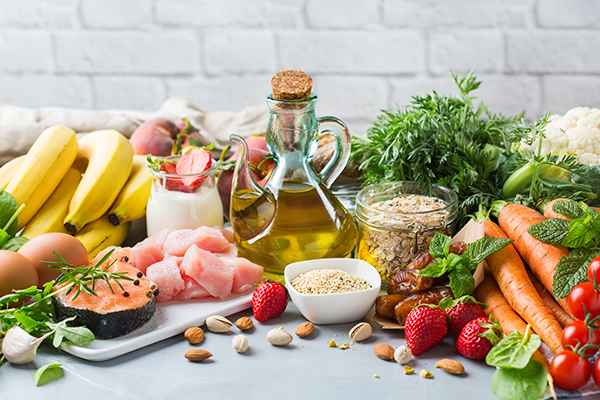
(Natural News) The global food supply is far from steady. In fact, it is currently shaky because of high prices and low supply – prompting nations to halt food exports for now.
Extreme weather such as the harsh winter in Uzbekistan and the prolonged drought in Argentina, coupled with the Russia-Ukraine war, forced many countries to ban exports of staple vegetables, fruits, grains and commodities.
Record frosts in Uzbekistan chilled its agriculture sector, compelling Central Asia’s most populous country to declare a four-month ban on onion exports on Jan. 20 after the pungent vegetable doubled in price in three weeks. (Related: Export bans put in place by different nations WORSEN food inflation.)
Highlighting the pitfalls of the national energy grid, the Uzbeks – including those in the capital Tashkent – endured days without electricity. They could do nothing but watch as the frosts, the most since 2008, spoiled the majority of onions in storage and froze harvested fruits.
Formerly among the cheapest onions produced by former Soviet republics, Uzbek onions are now as expensive as those from Georgia and Moldova – reaching 6,000 Uzbek sum (53 cents) to 8,000 Uzbek sum (70 cents) per kilo due to supply chain kinks.
With roads coated in ice, gas stations closed, and public transport limited, delivery of the produce from farms to markets was difficult and expensive. Potatoes posted a 14 percent hike in price since the year started, reported agriculture news site East Fruit last week.
Other parts of Central Asia like Kazakhstan, Kyrgyzstan, Tajikistan and Turkmenistan suffered from the price shifts in a milder manner.
 Over 20 countries impose ban on food exports
Over 20 countries impose ban on food exports
Kazakhstan followed Uzbekistan’s lead in banning exports of root vegetables on Jan. 22 after the Kazakh Ministry of Trade and Integration (MTI) said prices for its onions had risen by more than five percent in one week.
According to Kazakh Trade Minister Serik Zhumangarin, there are around 150,000 tons of onions in Kazakhstan– enough for five months consumption. Zhumangarin noted that the low stock was due to the increased demand in Uzbekistan, Russia and even Pakistan, a former major onion producer that got devastated by floods last summer. To stabilize local supply, the country bought 6,000 more tons from Tajikistan, which also saw its onion prices triple year-on-year to reach 329 Kazakh tenge (73 cents) per kilogram.
Kazakhstan’s food inflation of over 25 percent was the highest in Central Asia last year, prompting the MTI to order its regions to buy agricultural products from producers in Turkestan.
Of course, the banning of exports isn’t confined to Central Asia, also referred to as Middle Asia and Eurasia. Since Russia’s invasion of Ukraine on Feb. 24, 2022, over 20 nations have restricted certain food exports. The Russia-Ukraine confrontation has far-reaching implications as together they account for 28 percent of the world’s total wheat output, 25 percent of sunflower oil and 15 percent of corn.
Known as the breadbasket of Europe, Ukraine, which can feed 400 million in good times, prohibited the export of buckwheat, millet, barley, rye, salt, sugar and meat and imposed export licenses on sunflower oil, corn and wheat.
Russia barred the exports of sunflower seeds and imposed a 700,000-ton export quota on sunflower meal. The largest country in the world also suspended exports of corn, rye, meslin, wheat and barley.
Other countries which also prevented their produce from moving outward till the end of 2022, according to a report by the International Food Policy Research Institute, include Turkey, Argentina, India, Malaysia, Serbia, Egypt, Iran, Tunisia, Pakistan and Kuwait. Only Argentina, which capped the export volume of wheat and corn due to domestic inflation, ended its restrictions on Dec. 31, 2022.
Turkey banned exporting grain products, as well as butter, goat meat, beef and mutton after food inflation spiked 54 percent in February 2022. Meat prices, for one, have risen by nearly 50 percent. India, the world’s second-biggest wheat producer after China, has restricted the export of the staple cereal crop and capped sugar exports at 10 million tons through September 2022.
Serbia restricted the export of flour, wheat, corn and cooking oil; Algeria (pasta, wheat derivatives); Kuwait (chicken, grains, vegetable oil); Tunisia (fruits, vegetables); Iran (tomatoes, eggplants, potatoes); Indonesia (palm and kernel oil); and Kosovo (wheat).
Egypt, on the other hand, has blocked the export of onions, eggplant, potatoes and tomatoes for an indefinite period.
Unless farm yields make a rebound and the Russia-Ukraine war ceases, millions more will going hungry. That’s how fragile the global food supply is.
Listen to Mike Adams, the Health Ranger, expound on Ukraine’s food export ban below.
Ths video is from the Health Ranger Report channel on Brighteon.com.
More related stories:
Nigeria expects rise in malnutrition as food supply runs out.
Argentina halts all soy exports as food protectionism escalates.
Food prices nearing record highs, likely to get worse in coming weeks.
Sources include:
OilPrice.com
CNBC.com
TheEpochTimes.com
Brighteon.com
High prices, low supply forcing many countries to BAN food exports – NaturalNews.comIf you're gonna fight, fight like you're the third monkey on the ramp to Noah's Ark... and brother its starting to rain. Join our efforts to Secure America's Borders and End Illegal Immigration by Joining ALIPAC's E-Mail Alerts network (CLICK HERE)
-
02-12-2023, 07:12 AM #267
Nauseous no more: Natural remedies for motion sickness
Friday, September 16, 2022 by: Zoey Sky
Tags: acupressure, alternative medicine, aromatherapy, ginger, goodhealth, healing arts, herbal medicine, home remedies, Homeopathy, motion sickness, natural cures, natural healing, natural health, natural medicine, natural remedies, nausea, pain relief, remedies, vomiting
6,920VIEWS
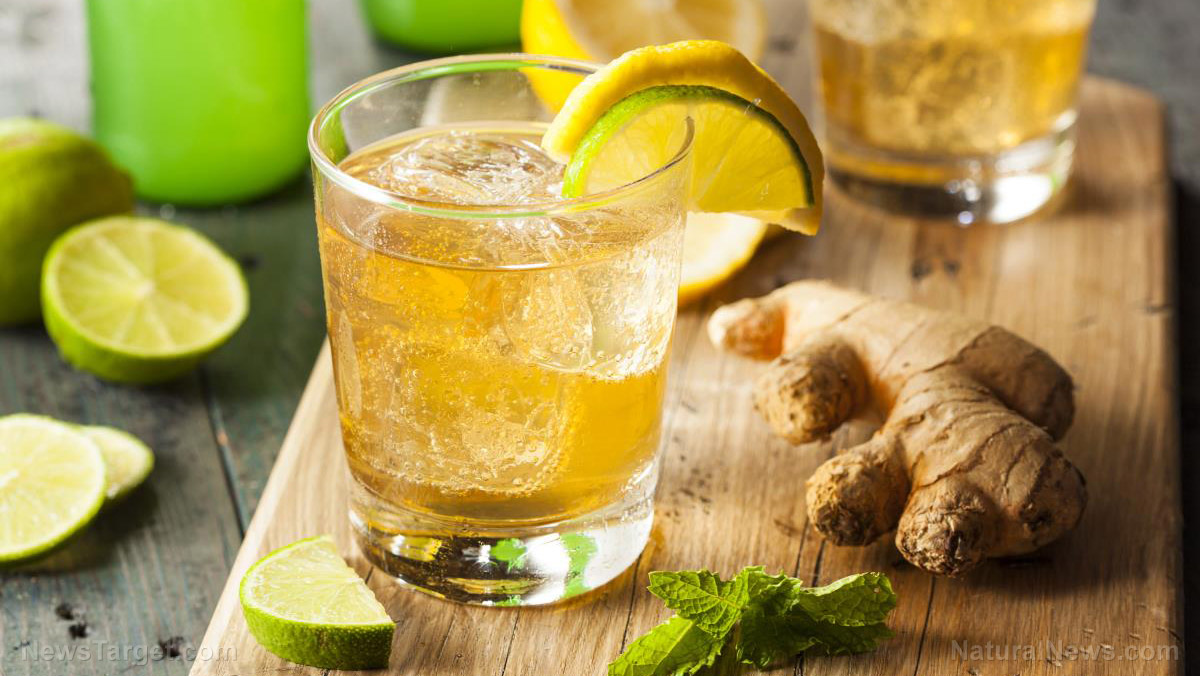
(Natural News) Research shows that almost everyone has experienced (or will experience) motion sickness at some point in their life. Western medicine attempts to treat motion sickness with drugs like dimenhydrinate (Dramamine), but this antihistamine can cause negative side effects like dizziness, drowsiness and decreased mental alertness, all of which can make a fun trip seem like a chore.
Fortunately, there are natural remedies that can help relieve the symptoms caused by motion sickness without any side effects.
Check the remedies below and see which one works best so you can enjoy your next trip even if you experience motion sickness.
Acupressure
Acupressure bands, also called seasickness bracelets and sea bands, work by applying mild pressure on the wrist. Some bands also deliver a small electrical charge.
According to Dr. Randy Horwitz, an integrative physician, these acupressure bands can be helpful for motion sickness without any of the negative side effects caused by other options like over-the-counter medicines.
If you forget your acupressure band, you can mimic the effect of one by pressing your middle and index finger on the point two inches above your inner wrist, between the two tendons. Pressure on this point, which is called “nei-guan” in Traditional Chinese Medicine, has long been believed to help relieve nausea and dizziness.
Aromatherapy with lavender essential oil
Motion sickness is caused by a conflict between your inner ear, which senses movement based on changes in fluid and pressure, and the visual information that your eyes receive.
 It is believed that stimulating your other senses can be a beneficial distraction.
It is believed that stimulating your other senses can be a beneficial distraction.
Aromatherapy, particularly inhaling the scent of lavender essential oil, has been shown to help alleviate nausea.
In the results of a 2018 review published in the journal Complementary Therapeutics and Medicine, scientists reported that aromatherapy with lavender could be used as an alternative or complementary therapy for postoperative nausea.
If you don’t like the scent of lavender essential oil, you can also try inhaling the aroma of ginger or peppermint essential oils.
Chamomile tea
Chamomile is an herb that can help soothe the stomach, reduce acids and relax stomach muscles.
Buy chamomile tea at most grocery stores and at online retailers. If you’re going on a long trip, steep chamomile tea before leaving and store it in a travel mug. You can drink the tea hot or cold.
Water or a carbonated beverage
When you start feeling nauseous, take small sips of cold water or a carbonated drink like seltzer or ginger ale to relieve your nausea.
Avoid caffeinated beverages such as coffee and certain sodas, which may contribute to dehydration and worsen your nausea. Consuming other beverages like apple juice or milk can also help with motion sickness.
Healthy snacks
Eating a light snack, like saltine crackers, can help relieve nausea. Avoid foods that are heavy, greasy or acidic since they’re slow to digest and may make your sickness worse.
Plan ahead if the road stops on your travels mostly offer fast food options. Alternatively, you can eat healthy snacks like apples, bananas, bread, cereal or other grains.
Ginger tea
Ginger is often considered the “gold standard” of herbal anti-nausea remedies because it is considered one of the most effective.
Ginger contains an active ingredient called gingerol that has been shown to be effective against indigestion and morning sickness. Research suggests that gingerol may also help post-surgical and chemotherapy-related nausea.
Before leaving for your trip, steep a soothing ginger tea. First, chop up an inch or two of fresh ginger root into thin slices. Add the ginger to a cup of boiling water, then set it aside and let it steep for five to 10 minutes.
Once the tea is cool, strain it before drinking or bring it with you in a travel tumbler on your trip.
You can also use ginger while you’re traveling by mixing ginger essential oil and a carrier oil and rubbing the mixture into pressure points on your wrist and forehead. Like other essential oils, ginger oil is intended for aromatherapy or topical application. Do not take it internally. (Related: 4 Natural solutions for motion sickness.)
Getting some air (fan or outdoors)
If you’re overcome with motion sickness, crack a window in your car or go outdoors if possible.
If the weather or your mode of travel doesn’t permit you to go outside, turn the air vents toward you or use a fan to blow air on your face. Note that cigarette smoke may also make your sickness worse.
Licorice root lozenges
Licorice root is used to soothe stomach acid irritation and stomach ulcer pain. It can also help digestion.
Taking licorice root lozenges may also help prevent nausea and vomiting. Buy lozenges at online retailers.
Other techniques to relieve nausea
If you’re on a cruise and suffering from seasickness, try to focus your eyes directly in front of you while looking at the horizon or at a motionless object on the shore. Try not to look at the surface of the water and avoid focusing on ripples and waves.
According to a study published in the journal PLoS One, people who focused their eyes directly in front of them were able to reduce body sway, which is helpful because it seems to be linked to motion sickness.
If possible, sit at the front of a boat and bypass the upper levels. When traveling by car or bus, take the front seat. If you are prone to motion sickness on airplanes, choose a window seat overlooking the wing.
Don’t try to distract yourself by reading if you’re experiencing motion sickness because this can make your condition worse. The same goes for using a laptop or your cell phone. If you’re prone to motion sickness, avoid sudden or rapid head movements.
Eat a small but nutritious meal at least one hour or two before starting your journey. Chew on gum or suck on ice chips if you start feeling dizzy during the trip.
Visit Remedies.news to learn more about natural remedies for common health complaints like dizziness and nausea.
Watch the video below for tips on how to make candied ginger at home.
This video is from the Vegan Shenanigan channel on Brighteon.com.
More related stories:
Looking for remedies to everyday illnesses? Look no further than your own kitchen.
10 Possible causes of dizziness and how to address them.
Five healthy reasons why ginger should be part of your meals.
Sources include:
NaturalHealth365.com
Healthline.com
Brighteon.com
Nauseous no more: Natural remedies for motion sickness – NaturalNews.comIf you're gonna fight, fight like you're the third monkey on the ramp to Noah's Ark... and brother its starting to rain. Join our efforts to Secure America's Borders and End Illegal Immigration by Joining ALIPAC's E-Mail Alerts network (CLICK HERE)
-
02-12-2023, 07:16 AM #268
The Dr. Hotze Report: Magnesium supplementation is necessary for better health – Brighteon.TV
Friday, September 16, 2022 by: Arsenio Toledo
Tags: #nutrition, alternative medicine, Brighteon.tv, Carolyn Dean, goodhealth, health science, Magnesium, magnesium deficiency, natural cures, natural health, natural medicine, nutrients, remedies, Steven Hotze, supplements, The Dr. Hotze Report
6,710VIEWS
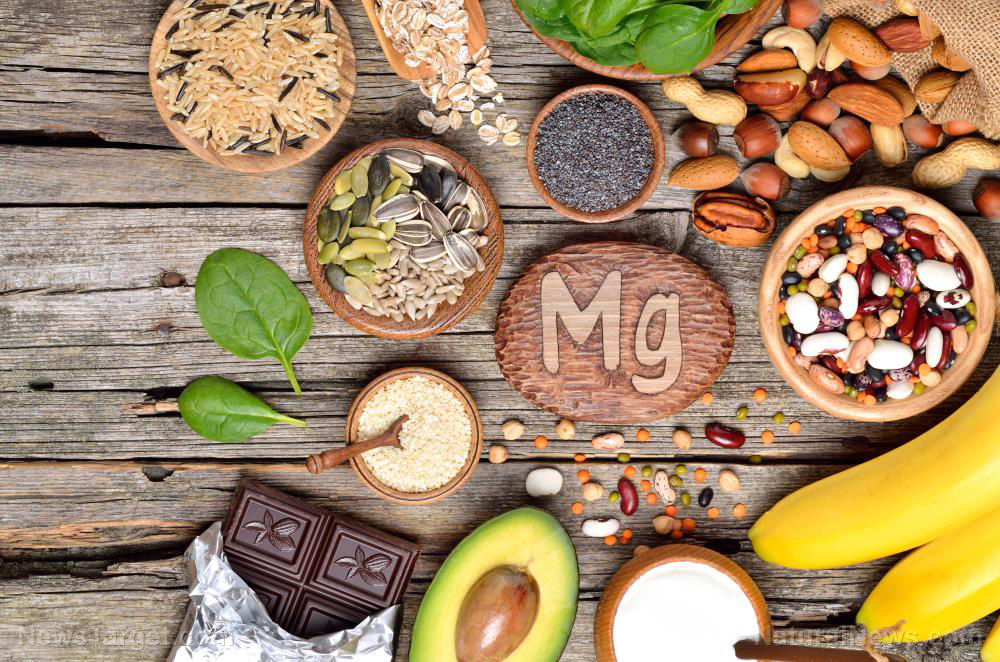
(Natural News) Drs. Steven Hotze and Carolyn Dean believe magnesium supplementation is absolutely necessary for good health. Hotze and Dean discussed the importance of magnesium during the Sept. 12 episode of “The Dr. Hotze Report” on Brighteon.TV.
Magnesium is necessary for the functioning of over a thousand enzyme systems that drive a variety of biological reactions in the body, according to Dean. In particular, magnesium is vital for the metabolism and activation of other essential nutrients that the body receives, including vitamin D.
Dean further noted that a lot of concerns people have about their health could be solved by taking enough magnesium.
“You’ll have a client or patient come in and say they’re fatigued. What do most allopathic doctors do? They say, ‘Oh, you must be depressed, you’re not sleeping well. Okay, here’s some medication.’ What do we do? We say, ‘Take magnesium. Take enough to saturate your body,'” said Dean.
“When I got into magnesium, the study of it … in the late 90s, I had heart palpitations, leg cramps, sore neck and shoulder, all the symptoms of magnesium deficiency,” said Dean.
Dean noted that many patients might be skeptical of magnesium supplementation because they experience what she called the laxative effect – patients getting diarrhea following taking magnesium and subsequently quitting it.
“That’s our problem. Doctors, they’ll give magnesium to people, they’ll get diarrhea and then the patient will quit,” said Dean. “But we need to take enough magnesium to saturate us from head to toe to deal with these 1,000 enzyme systems. Every nerve in the body, every muscle.”
 Dean said she knows about at least 65 conditions that are related to magnesium deficiency and could be solved simply by taking enough magnesium. The problem is that mainstream medical practitioners would rather treat these conditions with drugs.
Dean said she knows about at least 65 conditions that are related to magnesium deficiency and could be solved simply by taking enough magnesium. The problem is that mainstream medical practitioners would rather treat these conditions with drugs.
“We have people in our customer base, they’ve been on a dozen drugs, they start saturating with [magnesium] and they get rid of their drugs and doctors,” said Dean. “Allopathic doctors don’t really want to hear about this, and it’s because, as you know, we never learned anything about nutrition or dietary supplements in medical school. They’re put down, the drug companies are attacking dietary supplements right and left because that interferes with drug prescriptions.”
Nearly half of all Americans do not get sufficient magnesium from their diet
An estimated 48 percent of Americans do not get sufficient magnesium from their diet. This percentage rises among diabetics at 75 percent, and it goes even higher for postmenopausal women with osteoporosis, where the magnesium deficiency rate is 84 percent. (Related: Magnesium and osteoporosis: 10 Reasons why magnesium could prevent osteoporosis.)
Furthermore, because of chronic diseases, regular medication intake, decreases in food crop magnesium contents and the availability of refined and processed foods, the vast majority of people living in modern societies around the world are at risk for magnesium deficiency.
Magnesium deficiency could lead to a variety of health complications, including muscle twitches and cramps, fatigue and muscle weakness, mental health concerns like a lack of emotion and delirium, osteoporosis, high blood pressure and heart palpitations. Cases of severe magnesium deficiency can even lead to more serious complications, such as a stroke or heart failure.
This is why it is important for people to take supplements and to eat foods rich in magnesium, such as green vegetables, egg yolks, soybeans, brown rice, dark chocolate and nuts like almonds, peanuts, cashews and hazelnuts.
Learn more about the supplements people should take at SupplementsReport.com.
Watch the Sept. 12 episode of “The Dr. Hotze Report” with Dr. Steven Hotze as he interviews Dr. Carolyn Dean about the benefits of magnesium supplementation.
“The Dr. Hotze Report” with Dr. Steven Hotze airs every Monday and Saturday at 5-6 p.m. on Brighteon.TV.
More related stories:
Supplementing with magnesium for better sleep.
Common signs and symptoms of magnesium deficiency.
Magnesium: An essential mineral your body needs for optimal health.
Dr. Peter Glidden tells Dr. Lee Merritt: The human body needs 90 essential nutrients to stay healthy – Brighteon.TV.
Are you deficient in magnesium? Watch out for these signs.
Sources include:
Brighteon.com
TheEpochTimes.com
Healthline.com
PharmacyTimes.com
The Dr. Hotze Report: Magnesium supplementation is necessary for better health – Brighteon.TV – NaturalNews.comIf you're gonna fight, fight like you're the third monkey on the ramp to Noah's Ark... and brother its starting to rain. Join our efforts to Secure America's Borders and End Illegal Immigration by Joining ALIPAC's E-Mail Alerts network (CLICK HERE)
-
02-15-2023, 05:41 AM #269
Study: Drinking oolong tea can help reverse aging
Tuesday, February 14, 2023 by: Zoey Sky
Tags: aging secrets, alternative medicine, anti-aging, food cures, food is medicine, food science, goodfood, goodhealth, goodscience, health science, Herbs, longevity, natural cures, natural health, natural medicine, oolong tea, phytonutrients, prevention, research, superfoods, tea
400VIEWS
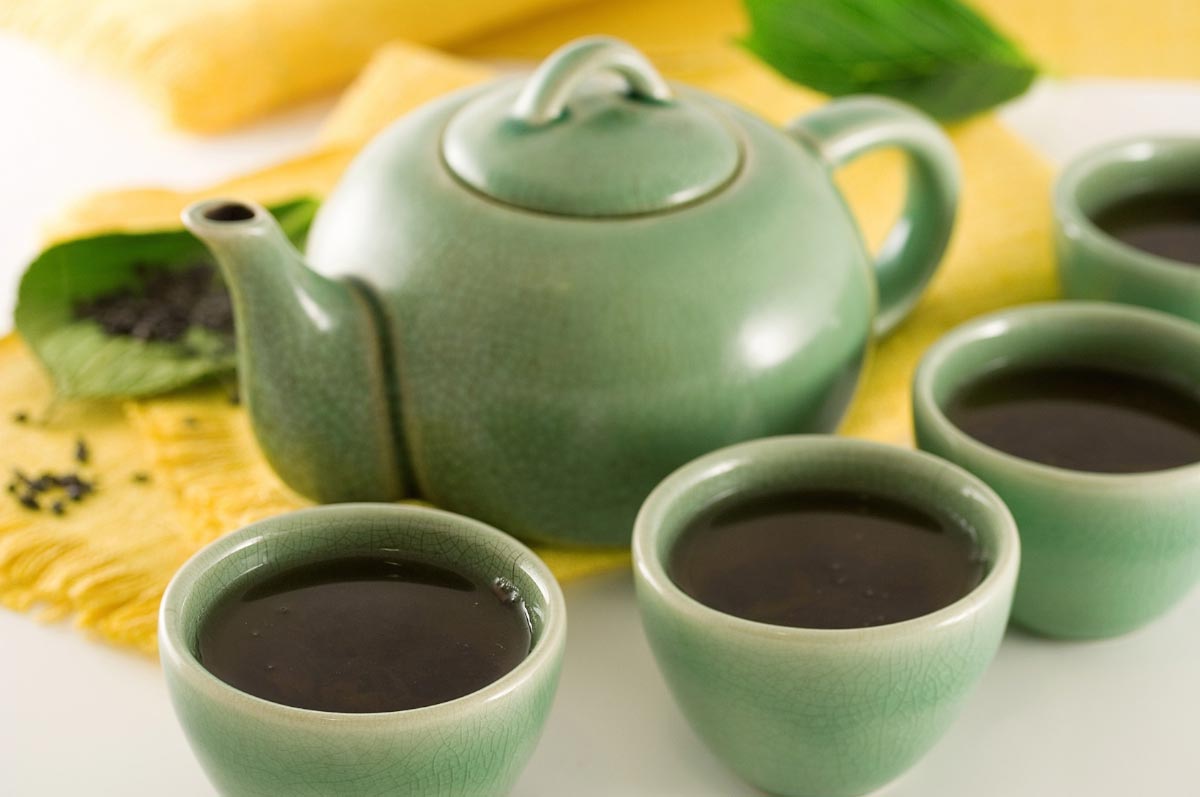
(Natural News) According to a study published in the journal Aging, drinking oolong tea regularly can help improve longevity.
For the 2021 study, researchers conducted a randomized controlled clinical trial of 43 healthy adult men. The volunteers were between the ages of 50 and 72.
Results of the study suggest that making evidence-based lifestyle changes could help reduce biological age.
Lifestyle changes and tea consumption
The test group took part in an eight-week treatment program that included guidance on health-related factors like:
- Eating habits
- Exercise
- Relaxation
- Sleep routines
- Supplementation with probiotics (healthy microbes in your gut) and phytonutrients (beneficial compounds found in plants)
Those in the control group received no intervention. After eight weeks, the research team took saliva samples to measure the participants’ health.
Upon examining data from the volunteers, the researchers discovered that the people in the group that made changes to their diet and lifestyle habits had healthier DNA. Data suggested that those in the treatment group appeared to reverse their own aging by as much as three years.
If the study findings are correct and can be duplicated in a longer experiment with both male and female volunteers, adopting some of the healthy habits of the treatment group can also help boost your longevity.
For example, drinking three cups of oolong tea was one of the health practices given to the volunteers in the treatment group. (Related: 6 Primary types of tea and their science-backed health benefits.)
 Reasons to start drinking oolong tea
Reasons to start drinking oolong tea
In an article, Dr. Kara Fitzgerald, one of the co-authors of the study, explained that oolong tea contains a plant compound called epigallocatechin gallate (EGCG). Research has shown that EGCG can help protect against Alzheimer’s disease, cancer, heart disease, high blood pressure, insulin resistance and obesity.
Other studies also suggest that drinking oolong tea daily offers several health benefits.
In a review article published in May 2022 in the peer-reviewed journal Food Science and Human Wellness, scientists reported that oolong tea has “antioxidant, anti-inflammatory, anti-cancer, anti-biotic, and anti-obesity properties.”
Additionally, oolong tea was found to improve the gut microbiome and protect the heart and liver.
“In spite of its popularity in Asian countries, studies on health promoting effects of oolong tea and its characteristic compounds … have attracted limited attention as compared to the knowledge of preventative and therapeutic effects of green and black teas,” said the study authors.
Most of the studies compiled in the review were controlled laboratory experiments on rodents, but the broad benefits of oolong tea on human health have also been observed in other studies.
Experts believe that these health benefits could be due to theasinensins, a spectrum of important compounds in tea. Theasinensin A is a natural compound found in oolong tea.
In a 2015 study conducted on the chemistry and health benefits of oolong tea and theasinensins, scientists found that the different processing methods for the tea plant Camellia sinensis change these molecules in various ways. Using certain methods produces different biochemical effects in different tea types like black, green and oolong tea.
Theasinesins help stabilize your blood sugar, which is an anti-diabetic effect. The compounds may also help athletes recover more quickly from vigorous exercise.
Oolong tea also contains gamma-aminobutyric acid (GABA), another beneficial compound, along with theanine. Both substances complement the caffeine tea so when you drink oolong you feel calm, clear-headed alertness instead of the jittery energy that comes with drinking coffee.
With data that confirmed the benefits of GABA and after finding a market for GABA-enriched foods in Asia, researchers discovered a way to multiply the amount of GABA in tea by letting it ferment in nitrogen gas. The process helps keep oxygen out.
GABA-enriched teas are produced in Japan and Taiwan and these products are popular in both countries.
In a 2019 study, scientists looked into the effects of GABA-enriched oolong on heart health and stress levels. They monitored participants’ hearts with EKGs.
The participants were also asked about their current feeling of stress and given tests of mental arithmetic as a stressor.
After drinking one cup of oolong tea, with half GABA-enriched and half regular, the perceived stress levels of the volunteers were significantly lower after consuming GABA-enriched tea,
Their heart rate variability was also lower and this is significant since it is an important metric of heart health and fitness, especially in response to stress.
Oolong tea: A light and delicious tea
Oolong means “black dragon” in Chinese and the tea comes from China. It is especially popular in Taiwan.
Most teas are made from the plant Camellia sinensis and depending on how the plant is processed, it can become black, green, oolong, pu-erh, white or yellow tea.
Green, white and yellow teas are processed with sundrying and heating. These processes don’t oxidize the tea leaves.
However, black tea is fully oxidized and the oxidation process happens before the tea leaves are processed.
On the other hand, oolong tea is only partially oxidized by at least 10 to 70 percent. The partial oxidation gives oolong tea a softer, woodier flavor.
Some oolongs are so lightly oxidized that they may taste like green tea but a little more mellow. Other oolongs that are mostly oxidized have a warm, muted flavor.
While each variety is different, several oolong teas contain less caffeine than black teas.
Considerations before drinking oolong tea
Like other superfoods, oolong tea must be consumed in moderation.
It’s also best not to drink oolong on an empty stomach because it can make you feel hungry and dizzy, an unpleasant state that Chinese people call “tea drunk.”
If you want a good night’s sleep, don’t drink oolong tea within three or four hours of your bedtime. Even if oolong tea has calming effects, it still contains caffeine that can make you jittery and make it harder to fall asleep.
Drink oolong tea while it’s still warm for the most delicious tea-drinking experience.
To make oolong tea, use clean-tasting water.
Oolongs thrive with full-boiling or just-off boiling water. Brew the tea for short amounts of time.
Savor oolong teas in a series of small infusions to appreciate their changing character as you drink. This means using at least a minimum of five grams of tea per 100 milliliters of water.
For darker oolongs, you can use as many as eight to 10 grams for that same volume, then steep them in a series of short 30-second infusions. Adjust as you make your tea.
Maintain healthy habits like exercising regularly, eating a balanced diet and drinking oolong tea daily to boost your overall well-being.
Visit Superfoods.news to learn more about tea and other nutritious foods with amazing health benefits.
Watch the video below to know more about oolong tea.
This video is from the Natural Cures channel on Brighteon.com.
More related stories:
Researchers explore the antidiabetic properties of black tea.
Honeybush tea is a nutrient-rich, antioxidant-filled, heart-healthy drink from South Africa.
How can drinking black tea benefit people with diabetes?
Sources include:
TheEpochTimes.com
SeriousEats.com
Brighteon.com
Study: Drinking oolong tea can help reverse aging – NaturalNews.comIf you're gonna fight, fight like you're the third monkey on the ramp to Noah's Ark... and brother its starting to rain. Join our efforts to Secure America's Borders and End Illegal Immigration by Joining ALIPAC's E-Mail Alerts network (CLICK HERE)
-
02-16-2023, 08:10 AM #270
Study: Drinking at least 2 cups of coffee a day helps maintain healthy blood pressure
Wednesday, February 15, 2023 by: Zoey Sky
Tags: alternative medicine, blood pressure, coffee, food cures, food is medicine, food science, functional food, goodfood, goodhealth, goodmedicine, goodscience, health science, heart disease, heart health, natural cures, natural health, natural medicine, remedies, research, superfoods
690VIEWS

(Natural News) If you start each morning with a cup (or two) of coffee, here’s something that might cheer you up: According to a study, those who drink at least two or three cups of coffee per day have lower blood pressure than people who consume less.
The study was published in the journal Nutrients.
Coffee and heart health
Coffee is an integral part of the culture in Italy and the beverage also has many fans worldwide. In 2020 and 2021, estimates revealed that the world consumed a whopping 10 million tons of coffee.
While experts don’t always agree on coffee’s health implications, data from recent studies suggest that drinking coffee can help lower the risk of several conditions like cardiovascular disease, diabetes and neurodegenerative and liver diseases.
But what causes these benefits remains a mystery.
Arrigo Cicero, the study’s first author and a professor at the Department of Medical and Surgical Sciences at the University of Bologna, explained that caffeine is only one of several coffee components and that it’s not the only component with an active role.
Cicero added that positive effects on human health have also been recorded in people who choose to drink decaffeinated coffee. While data has shown that caffeine can increase blood pressure, other bioactive components in coffee “seem to counterbalance this effect with a positive end result on blood pressure levels.” (Related: 5 Caffeine FACTS and 5 caffeine MYTHS.)
Coffee consumption habits and blood pressure levels
To learn more about the heart benefits of coffee, researchers analyzed a sample of 720 men and 783 women from the Brisighella Heart Study.
 The research team compared blood pressure levels, coffee consumption habits and other clinical data points for each participant. The results revealed that peripheral blood pressure was significantly lower in the people who drank one to three cups of coffee a day compared to the non-coffee drinkers.
The research team compared blood pressure levels, coffee consumption habits and other clinical data points for each participant. The results revealed that peripheral blood pressure was significantly lower in the people who drank one to three cups of coffee a day compared to the non-coffee drinkers.
Peripheral blood pressure describes blood pressure measured from the upper arm.
Thanks to the study, researchers were also able to confirm these effects “with regard to the central aortic pressure, the one close to the heart,” where experts observe an almost identical phenomenon “with entirely similar values for habitual coffee drinkers compared to non-coffee drinkers.”
High blood pressure is closely linked to heart disease because of the high force of blood consistently pushing against the walls of your blood vessels. This forces the heart to work harder so it can pump blood.
The findings from the University of Bologna study are valuable because they offer another potential nutritional avenue for naturally lowering blood pressure and protecting against heart disease.
Professor Claudio Borghi, who led the study, explained that it is the first study to observe this association in the Italian population. The findings also confirm the positive effect of coffee consumption on cardiovascular risk.
More tips on how to maintain healthy blood pressure
Hypertension (high blood pressure) affects one-third of all adults in the U.S., and only less than 50 percent of them have the condition under control.
This is bad because high blood pressure can cause serious health problems without showing any warning signs. When your blood pressure is too high for too long, it puts you at risk for conditions like heart disease, kidney damage, stroke or an aneurysm formation.
Fortunately, making good lifestyle changes can help you naturally lower your blood pressure.
Exercise regularly
Regular physical activity is crucial for your overall well-being. Exercise helps control high blood pressure and it can also help you manage a healthy weight, strengthen your heart and lower stress levels.
If you are fit enough, aim for at least 150 minutes of exercise per week of moderate-intensity physical activity, like brisk walking.
While any type of aerobic activity like dancing, jogging or walking offers benefits for your heart health, try to find activities you enjoy doing so it will be easier to commit to a regular routine.
Increase your potassium intake
Potassium offers many benefits. It can help regulate heart rate and it can also reduce the effects of sodium in the body.
The nutrient helps your body eliminate sodium and also eases tension in your blood vessel walls, both of which help to lower blood pressure.
The most effective way to increase your potassium intake is by adjusting your diet and eating potassium-rich foods such as:
- Beans
- Fruits like apricots, avocados, bananas, melons, oranges and tomatoes
- Leafy green vegetables, potatoes and sweet potatoes
- Milk, cream cheese and yogurt
- Nuts and seeds
- Salmon and tuna
Incorporating these superfoods into your diet can help boost your heart health, but if you’re not sure check with your doctor about the potassium level that’s right for you.
If you have significant kidney disease, avoid consuming too much potassium because your kidneys may not be able to eliminate it.
Reduce your salt intake
Most people consume too much salt without even realizing it. The American Heart Association estimates that the average American consumes a whopping 3,400 mg of sodium a day.
The recommended daily intake is only 2,300 mg, with an ideal limit of less than 1,500 mg per day, especially for people who have high blood pressure.
Making a small reduction in your sodium intake can still help improve your heart health. It can also reduce your blood pressure if you have high blood pressure.
Follow these tips to decrease sodium in your diet:
- Check food labels and get “low salt” or “low sodium” alternatives to the food and beverages you normally buy.
- Limit your intake of processed foods. Only a small amount of sodium naturally occurs in foods and almost 70 percent of the sodium you eat comes from processed, prepackaged and restaurant foods.
- Don’t add salt when cooking. One teaspoon of salt contains 2,300 mg of sodium. When cooking, use flavorful salt substitutes like garlic, herbs, spices and other seasonings.
Moderate your alcohol consumption
According to some studies, drinking alcohol in moderation can benefit your heart. But drinking too much alcohol can trigger a sudden spike in your blood pressure.
If you do drink, the American Heart Association recommends that men limit their alcohol consumption to two drinks per day. Women should limit their alcohol intake to one drink per day.
A drink is considered one 4 oz. of wine, 12 oz. beer, 1.5 oz. of 80-proof spirits, or 1 oz. of 100-proof spirits.
If you’re currently taking medication to treat high blood pressure, closely monitor your alcohol intake since it can reduce the effectiveness of blood pressure medications.
Manage your stress levels
Stress is a common part of your daily life and when a stressful situation is resolved, your heart rate and blood pressure usually returns to normal. But be wary of chronic stress because it may put you at risk for many long-term health problems like high blood pressure, heart disease and stroke.
Stress can also increase your blood pressure levels if your coping mechanisms involve snacking on junk food, drinking alcohol or smoking.
It’s impossible to eliminate all stressors from your life, but learning to cope with them in a healthier way can benefit your overall health and wellness. This can then help lower your blood pressure.
Avoid stress triggers and try to avoid putting yourself in unnecessary stressful situations. If the commute to work means you often get stuck in rush-hour traffic, try leaving for work a few minutes early.
You should also take time to relax and enjoy. Spend a couple of hours on the weekend doing things that make you happy. It can be as simple as preparing a healthy and delicious meal, reading or enjoying a cup of coffee with your best friend.
Follow a balanced diet, maintain a healthy weight and drink two to three cups of coffee a day to help reduce your blood pressure.
Watch the video below to know more about organic fair trade coffee.
This video is from the Health Ranger Store channel on Brighteon.com.
More related stories:
Study: People who drink coffee have lower risk of early death.
Study: Coffee drinkers have higher levels of anti-inflammatory gut bacteria.
Coffee and heart health: Study finds that excessive coffee drinking has no negative effect on the heart.
Sources include:
StudyFinds.org
PennMedicine.org
Brighteon.com
Study: Drinking at least 2 cups of coffee a day helps maintain healthy blood pressure – NaturalNews.comIf you're gonna fight, fight like you're the third monkey on the ramp to Noah's Ark... and brother its starting to rain. Join our efforts to Secure America's Borders and End Illegal Immigration by Joining ALIPAC's E-Mail Alerts network (CLICK HERE)
Similar Threads
-
Massachusetts Obamacare Site Tells Healthy People to Confirm Mental Diseases & Makes
By AirborneSapper7 in forum Other Topics News and IssuesReplies: 2Last Post: 11-12-2013, 04:41 AM -
Healthy Americans Health Insurance may Double, Even Triple When Obamacare Kicks In
By AirborneSapper7 in forum Other Topics News and IssuesReplies: 0Last Post: 07-01-2013, 11:48 PM -
CODEX NUTRITION COMMITTEE CHOOSES MALNUTRITION with sub-optimal nutrition
By AirborneSapper7 in forum Other Topics News and IssuesReplies: 0Last Post: 12-16-2012, 05:07 AM -
Try Parenting Instead Of Mental Health Screening
By PinestrawGuys in forum Other Topics News and IssuesReplies: 8Last Post: 02-08-2007, 04:37 PM -
Latino Diet Changes Deemed Health Crisi
By Charlesoakisland in forum illegal immigration News Stories & ReportsReplies: 12Last Post: 04-26-2005, 03:01 PM


 25Likes
25Likes LinkBack URL
LinkBack URL About LinkBacks
About LinkBacks




 Reply With Quote
Reply With Quote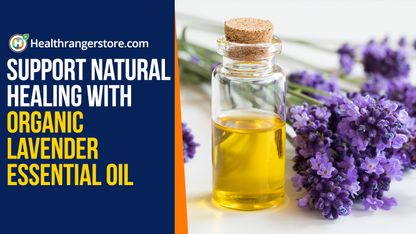
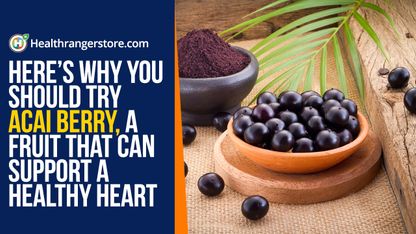
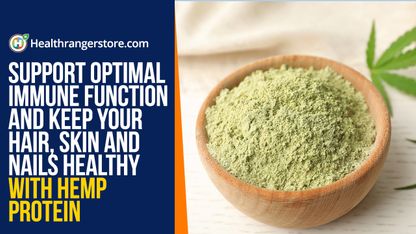

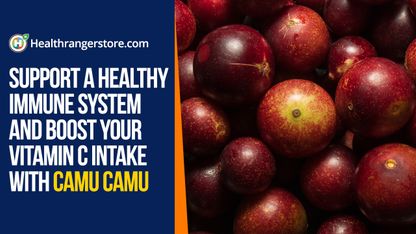



Treasonous Congress Funds Billions For Middle East Invasion...
05-02-2024, 01:28 AM in Videos about Illegal Immigration, refugee programs, globalism, & socialism